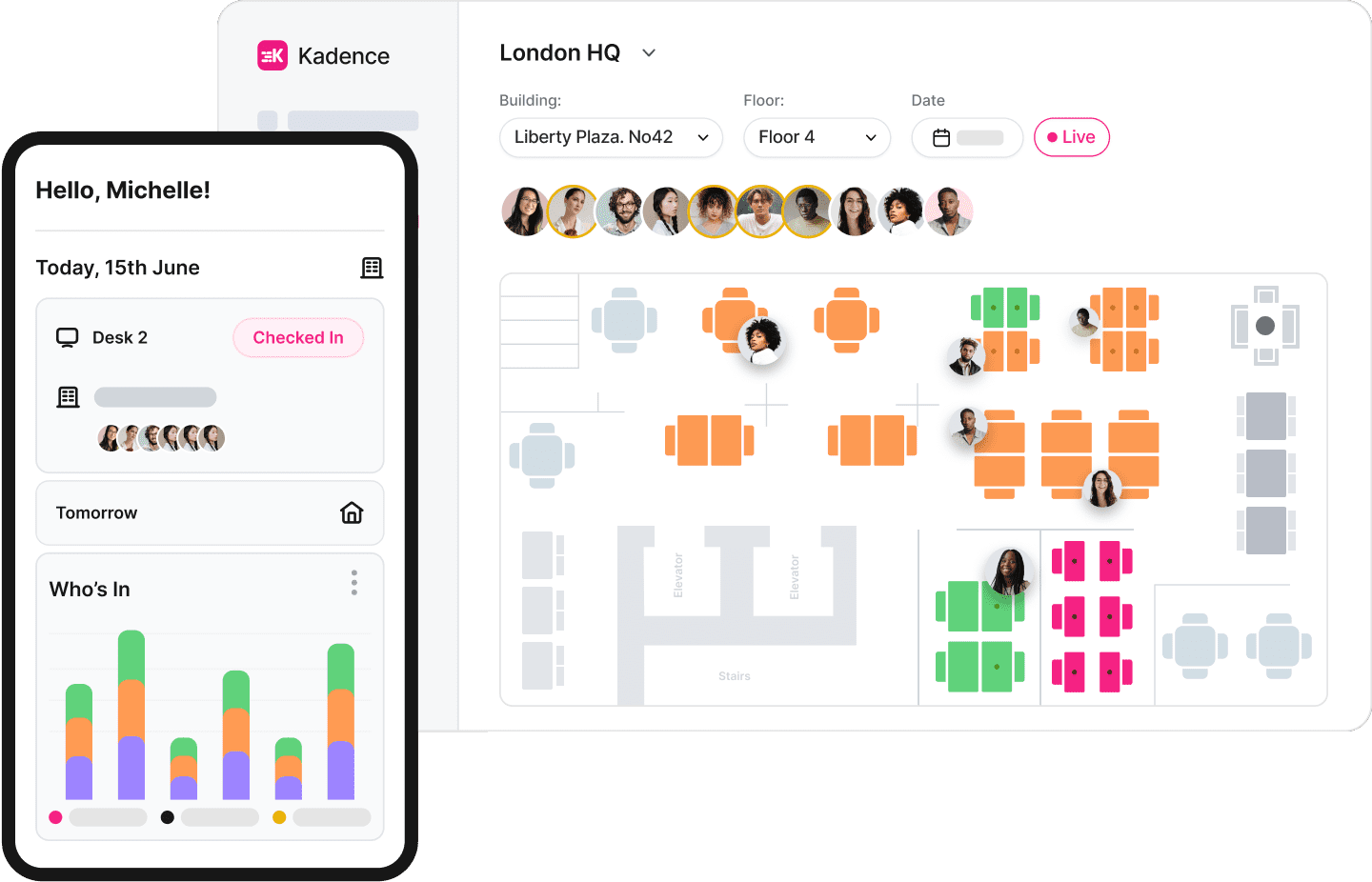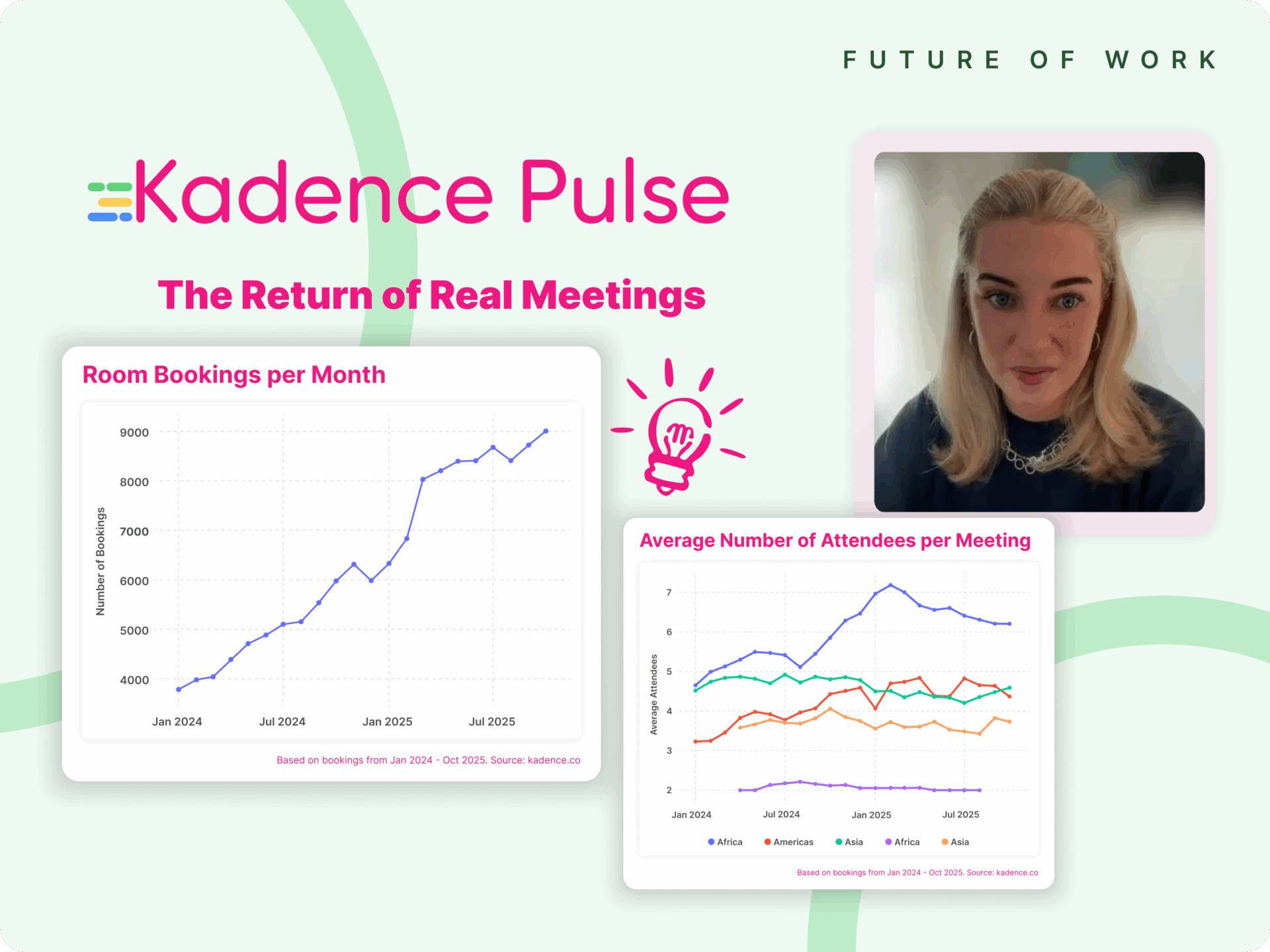Have you heard of activity-based working?
When employees prepare to get back to the office in person, Nancy no longer wants to spend the entire day alone at the front office. Harry wants to spend an hour with colleagues brainstorming on ideas while lounging on a couch before he retreats to library silence to get his tasks done.
What about Mary? She’s looking for a home away from home, a working environment that gives her a holistic, I don’t miss my home, experience. With more than half of your employees ready to quit their jobs if they lack flexibility, there’s no better time for a change.
Welcome to activity-based working, a workplace design where teams leverage workplaces based on their needs.
What Is Activity-Based Working?
An activity-based working environment is a human-centric workplace that works in tandem with every office space to create an experience that empowers every employee according to their individual needs.
Think of the three employees we’ve named above: Nancy was spending a lot of time by herself at the front office, but from the onset of the pandemic, she realizes that she wants some time to interact with her colleagues, get to know them better.
Harry is an extrovert that is equally dedicated to his work. Therefore, spending the whole day at his desk by himself might make him productive for a few hours. What does he need to cater to his waning concentration for maximum productivity throughout the day?
Each of these employees has different needs, but they work in the same office. The idea of activity-based working is to design the office workspace to provide spaces where each employee can meet these needs on-demand.
In addition, the setting works if the employees are empowered to take advantage of these spaces without compromising their work efficiency and productivity. That means creating an adaptable, professional, flexible, and autonomous environment, but it also requires a change in mindset throughout the organization.
Where Activity-Based Working Started
The concept started in the 1980s with Robert Luchetti, an American architect studying the workplace and looking for different ways to design a workplace setting to enhance efficiency. Robert determined that an office with different workplace environments created specifically for different workday activities would increase productivity.
The idea was to create multiple settings with different physical and technical characteristics. These settings would then be grouped to support the different performance metrics. Robert determined these settings to include small, large, private, open, and the team shared spaces.
Additionally, the spaces were supposed to provide the flexibility needed to move furniture and people from one setting to the other without disrupting the entire office and with the help of technology.
In 1990, Robert worked with Interpolis, the Dutch Insurance company, to create the first activity-based working space. Interpolis got rid of the assigned desk model in favor of a flexible environment that maximizes its square footage. One vital factor Interpolis implemented with this change was the shift towards a complete autonomous working environment for employees, who could now choose when, where, and for how long they wanted to work.
Interpolis employees no longer had to deal with the pressure of clocking in and out on time. They also didn’t have to spend the whole day cooped up on one desk for the entire day “As long as the work gets done.”
Why Activity-Based Working?
The most effective leaders and managers trust their subordinates and employees in today’s working environment. Additionally, workspaces are no longer viewed as static spaces where people merely sit and work. Workspaces are now part of the entire holistic working environment, which greatly impacts employees.
Think about your home for a minute. When you get back home from work, which part of the house do you look forward to seeing the most? Why? Whether consciously or unconsciously, that bathtub, living room couch, tree in the yard, or king-sized bed gives you some sense of comfort or relaxation.
But it’s not just one object in the room; it’s everything in it, how the items are spaced, their colors, and arrangement. Everything comes together to make you feel relaxed. Well, you can give your employees the same impact if you create the right setting in your office spaces.
Once you learn how to set up office neighborhoods that create synergy, you:
- Increase the productivity of your employees because you give them the flexibility they desire, especially concerning their preferred working environments
- Improve employee satisfaction. Providing spaces where employees are more productive and efficient makes it easier to complete their tasks. This increases their workday satisfaction.
- Reduce your real estate costs. One primary aspect of activity-based working is its ability to utilize space. For instance, Interpolis reduced its office space from two to one building after adopting an activity-based working environment. As such, your office kitchen can be turned into an effective workspace.
What Makes An Activity-Based Working Space?
In a nutshell, an activity-based working environment has excellently designed spaces, signage, and technology. Still, you must have these four elements to call your workplace an activity-based working environment:
The Right Design
Designing an activity-based working environment means creating different spaces under one roof. For instance, you need a quiet space where people can get work done without interruptions, another space where you can host teams or client meetings, and a lunch booth where you can eat or have snacks and coffee as you chitchat with your colleagues. Each of these spaces should be designed to meet the needs of your employees.
The Right Stimulation
You want an office setting that tells your employees “Welcome Back To Work” like a warm hug from a loved one. This means putting cues within your activity spaces to help employees navigate the different sections with ease.
That way, if they want some quiet time, they know exactly where to go seamlessly and on-demand. You want to include elements that make every employee feel comfortable in their preferred space of work at a moment’s notice. This also helps your employees learn how to use your designed spaces effectively.
Awareness
What is the point of designing a beautifully spaced activity-based working environment if your employees are not mindful of how to use them to fruition? For instance, no employee should make noise in the silent room.
Instead, they should understand that this is the space you take when you want to work in total silence. Every employee, in this case, automatically puts their phones on silent when in the silent space. Remember the Interpolis motto, “As long as the work gets done.” The key here is trust and autonomy. Trust your team members to get the job done well in their way.
Learning And Development
While the concept has been around since 1990, it is fairly new among many employees and employers. Keep this in mind as you transition from your traditional way of working to an entirely activity-based working environment.
This is going to be a learning experience for everyone in the office. But with the data and information gathered using technology, you can use the insights to learn and develop everyone’s mindset and behavior, just as much as you keep developing your workplace design. The goal is to learn, adjust, and grow until success.
In a word, this shift means thinking thoroughly about the daily behavior of your employees and using this information to create a working environment that provides productivity and satisfaction at minimal costs. As such, aim to build settings that meet your employees’ personal and professional needs. Go beyond offering cafeterias and kitchens by turning these spaces into productive areas for work.
Don’t Underestimate Anything In An Activity-Based Working Environment
Your furniture is an active item in your activity-based working environment because it allows you to accommodate the needs of your employees. An excellent example is an open space built to accommodate a lounge area, standing tables, a communal table, and a phone booth.
Each setting requires a unique set of furniture to meet their primary purpose, even though they all share the same open room. Your signage is also crucial because it advances the behavioral cues of your employees, thus, ensuring every activity setting is used for the right reason.
Signs set the right expectation, which, in turn, help maximize the amenities in a workplace and the employee experience. You must monitor the utilization of your workspace using technology and people. For example, monitor how employees use each setting and record this information.
You can use this data to change your activity-based work settings to fit your employee needs better. A good example would be adding signage to make navigation straightforward from one setting to another.
Examples Of An Activity-Based Working Environment
Workspaces For Individuals
Instead of the traditional individual desk working model, an activity-based working environment offers numerous individual work settings that focus on one person’s privacy through shared desk spaces, individual carrels, or a single focus room. These spaces meet the needs of individual employees.
Open Lounges Or Collaborative Spaces
This is an activity set designed to encourage teamwork and collaboration amid comfort. A collaborative space can be in an enclosed room with a whiteboard and furniture you can move or an open space with seating arrangements in a circle. Lounges are specially made to offer a mix of comfort and productivity, making them the perfect spaces for employees to chitchat, work individually, collaborate, or relax.
Project Rooms
These are quiet rooms and meeting rooms where no noise or minimal noise is allowed. Meeting rooms are especially important in an organization because of their versatility. But with a project room, you can make it small for a few people with video conferencing tools and a whiteboard.
Café Area
Café areas are also open café workspaces based on designing and choosing furniture. For instance, you can include a small lounge in your café area, tallboy tables for quick meetings, or banquette seating options.
Private Rooms And Phone Booths
Private rooms work best for meetings or HR–employee meet-ups, while phone booths provide a space where employees can take calls privately and quietly.
The Shift To Activity-Based Working Starts With The Mind
As a leader, your focus should be on employee needs. Once you know your employees’ needs, empower them and trust them to deliver. This starts with a change in mindset, especially because the traditional work culture demands a rigid workplace environment.
It will not be easy to watch your employees chatting in the lounge area at 10 am when you are worried about targets and responsibilities. Nonetheless, if you can accommodate remote employees, you can accommodate an activity-based working environment.
You also need to invest in IT and training to get the entire organization on this new culture. Grow with agility, flexibility, and your employees in mind. Enhancing your efficiency and productivity through an activity-based working environment will increase your bottom line.




